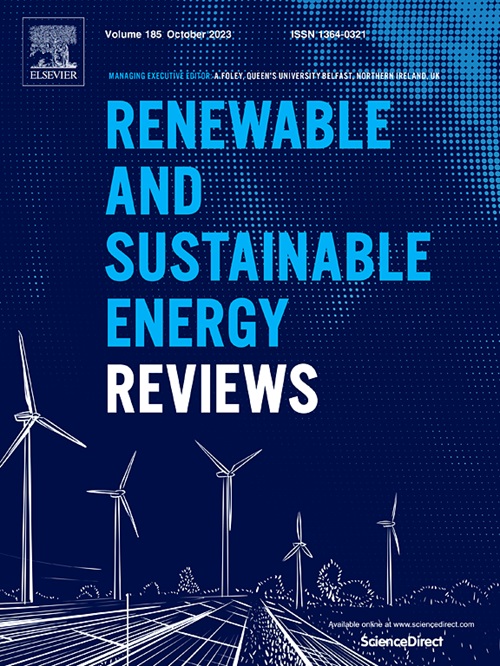Demand-side management in less energy-intensive industries: A systematic mapping study
IF 16.3
1区 工程技术
Q1 ENERGY & FUELS
引用次数: 0
Abstract
The industrial sector is a significant energy consumer amidst the ongoing energy transition to renewable energy resources. With the rising penetration of volatile renewable sources, the need for managed electricity consumption, i.e., demand-side management intensifies. However, the participation of incentivized programs is mostly limited to single consumers with a vast electricity consumption. Recent regulatory changes have allowed independent aggregators to participate in the reserve and ancillary market, enabling smaller end-users to contribute. With the numerous demand-side management contribution possibilities, including energy efficiency and demand-response measures, the objective of the study is to systematically categorize demand-side management applications across different industrial sectors and stages. Furthermore, the study aims to analyze interconnections between these objectives, which are predominantly addressed in isolation within the existing research literature. Highlighting the potential in industrial electricity consumption optimization contributes to the United Nations’ sustainable development goals 7, 9, and 13. To structure the application possibilities within the less-energy intensive industry, a systematic mapping study was conducted covering developments from 2012. An initial search was conducted on several literature databases, and structured selection and data extraction were applied. Cited and referenced studies were screened until no more relevant publications were found. Studies show a wide range of application possibilities and were structured and compiled into an application map. Trends show the increasing inclusion of storage devices in recent publications. Application of energy-flexible and energy-efficient objectives shows synergetic effects. A notable lack of studies focusing on ancillary markets within the less energy-intensive industries was discovered.

求助全文
约1分钟内获得全文
求助全文
来源期刊

Renewable and Sustainable Energy Reviews
工程技术-能源与燃料
CiteScore
31.20
自引率
5.70%
发文量
1055
审稿时长
62 days
期刊介绍:
The mission of Renewable and Sustainable Energy Reviews is to disseminate the most compelling and pertinent critical insights in renewable and sustainable energy, fostering collaboration among the research community, private sector, and policy and decision makers. The journal aims to exchange challenges, solutions, innovative concepts, and technologies, contributing to sustainable development, the transition to a low-carbon future, and the attainment of emissions targets outlined by the United Nations Framework Convention on Climate Change.
Renewable and Sustainable Energy Reviews publishes a diverse range of content, including review papers, original research, case studies, and analyses of new technologies, all featuring a substantial review component such as critique, comparison, or analysis. Introducing a distinctive paper type, Expert Insights, the journal presents commissioned mini-reviews authored by field leaders, addressing topics of significant interest. Case studies undergo consideration only if they showcase the work's applicability to other regions or contribute valuable insights to the broader field of renewable and sustainable energy. Notably, a bibliographic or literature review lacking critical analysis is deemed unsuitable for publication.
 求助内容:
求助内容: 应助结果提醒方式:
应助结果提醒方式:


